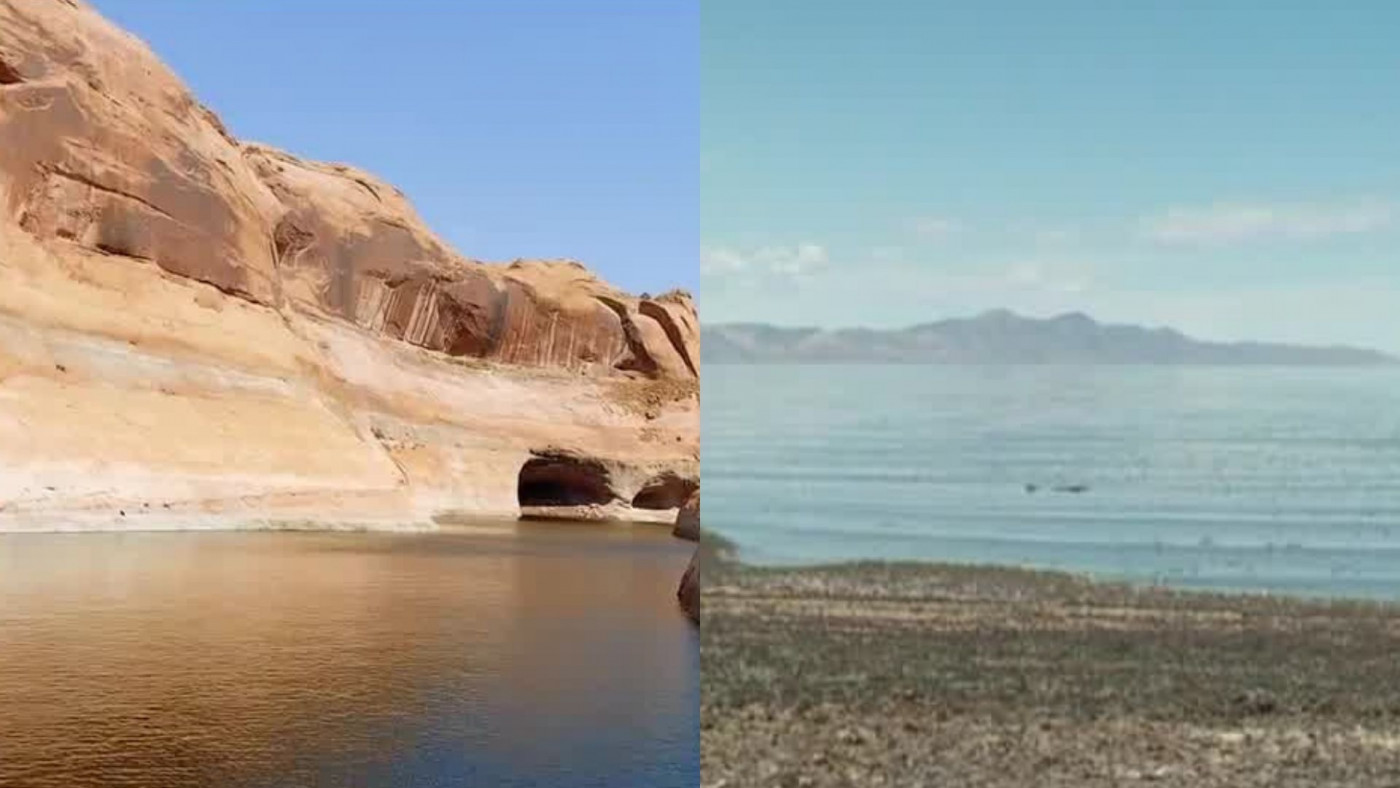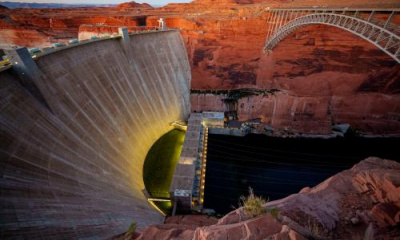SALT LAKE CITY — The Great Salt Lake is six feet lower right now than it normally would be. While it’s slightly above the lowest-ever level reached late in 2021, it’s setting calendar day record lows on a consistent basis.
But six vertical feet translates to 56 percent of its normal size. That’s 750 square miles of lake bed uncovered.
Aside from its iconic status, the Great Salt Lake is a weather maker and pollution capper. The middle Wasatch Mountains rely on the boost of lake effect snowfall, and Wasatch Front residents would rather not have a giant source of wind-blown dust next door.
Utah's other iconic lake doesn't make the weather. Lake Powell generates power and stores water.
To get a sense of the challenge at Lake Powell, you can picture one of those water jugs you might take to a softball game — the kind with a white spigot near the bottom.
Water has weight and the spigot works by gravity, just like the outflow of a dam: the more water, the more weight, the stronger flow.
It doesn't have to be full to work. The goal in Lake Powell this year was to keep the level above 3,525 feet in elevation. The Bureau of Reclamation set that as their minimum target, but they will almost certainly go below that in the coming days because the lake is currently two-tenths of an inch above that.
The severe consequences happen at 3,490 feet. After that, the dam won't generate reliable power. That's called the minimum power pool.
The lake is still away from the most serious benchmark called "dead pool." If you think again about the water jug, that’s the point where the water level sits below the spigot. Of course, with a jug, you can tip it to pour water out. In a reservoir, dead means dead. The dam will not function below that level.
Water managers have some options: they can limit water downstream, and they can release water from dams upstream like Flaming Gorge, but filling a gigantic lake with water from a smaller lake is a limited short-term measure.









